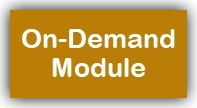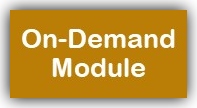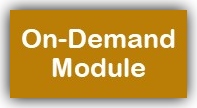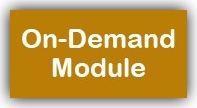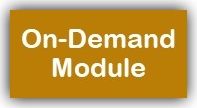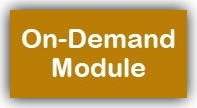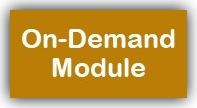ASPAN Learn
Catalog Advanced Search
-
Etiology, rick factors, incidence, signs & symptoms, and treatment for PTSD/PTSS. Module will be available for 120 days from date of purchase.
This module includes the etiology, rick factors, incidence, signs & symptoms, and treatment for PTSD/PTSS.
-
You must log in to register
- Non-member - $40
- Member - $15
- More Information
-
You must log in to register
-
Strategies for to handle crucial conversations in stressful situations. Module will be available for 120 days from date of purchase.
This module includes strategies for to handle crucial conversations in stressful situations.

Maureen Iacono
BSN RN CPAN
-
You must log in to register
- Non-member - $40
- Member - $15
- More Information
-
You must log in to register
-
Preprocedural assessment, intraoperative positioning, possible complications & interventions and patient teaching. Module will be available for 120 days from date of purchase.
This module includes preprocedural assessment, intraoperative positioning, possible complications & interventions and patient teaching.

Linda Ziolkowski
MSN RN CPAN
-
You must log in to register
- Non-member - $40
- Member - $15
- More Information
-
You must log in to register
-
Patient care priorities for the Parkinson’s patient. Module will be available for 120 days from date of purchase.
This module includes patient care priorities for the Parkinson’s patient.
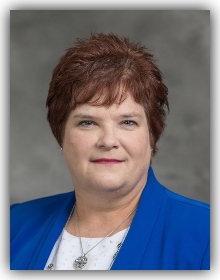
Nancy Strzyzewski
MSN RN CPAN CAPA
-
You must log in to register
- Non-member - $40
- Member - $15
- More Information
-
You must log in to register
-
The mechanism of nociception and multimodal therapy as well as opioids and adjuvants used in multimodal therapy. Module will be available for 120 days from date of purchase.
This module includes the mechanism of nociception and multimodal therapy as well as opioids and adjuvants used in multimodal therapy.

Ramona Irabor
MSN RN-BC AGCNS-BC CPAN
-
You must log in to register
- Non-member - $40
- Member - $15
- More Information
-
You must log in to register
-
Adverse surgical events cause negative patient health outcomes and harm that can often overshadow the safe and effective patient care provided daily by nurses as members of interprofessional healthcare teams. The purpose of this manuscript is to educate, inform, and stimulate critical thinking by discussing perioperative near miss case studies and the underlying factors that lead to errors.
Authors: Christopher H. Stucky, PhD, RN, CNOR, CSSM, CNAMB, NEA-BC, FAAN, J. Michael Hartmann, DNP, RN, CNOR, CSSM, CNAMB, RNFA, Young J. Yauger, PhD, RN, CRNA, Kenneth J. Romito, DNP, RN, APRN, AGCNS-BC, CNOR, CSSM, David F. Bradley, DNP, RN, APRN, AGCNS-BC, CNOR, Gaston Baza, DNP, RN, CNOR, Megan E. Lorenz, DNP, RN, APRN, ACCNS-AG, AGACNP-BC, RN-BC, Sherita L. House, PhD, RN, CCRN, Rebeccah A. Dindinger, DNP, RN, RNC-OB, IBCLC, Joshua A. Wymer, DNP, RN, CNOR, RN-BC, NEA-BC, CHCIO, CDH-E, FACHE, FAAN, Melissa J. Miller, PhD, RN, CNOR, Albert R. Knight, DNP, RN, CNS-CP, CNOR
Adverse surgical events cause negative patient health outcomes and harm that can often overshadow the safe and effective patient care provided daily by nurses as members of interprofessional healthcare teams. Near misses occur far more frequently than adverse events and are less visible to nurse leaders because patient harm is avoided due to chance, prevention, or mitigation. However, near misses have comparable root causes to adverse events and exhibit the same underlying patterns of failure. Reviewing near misses provides nurses with learning opportunities to identify patient care weaknesses and build appropriate solutions to enhance care. As the operating room is one of the most complex work settings in healthcare, identifying potential weaknesses or sources for errors is vital to reduce healthcare-associated risks for patients and staff. The purpose of this manuscript is to educate, inform, and stimulate critical thinking by discussing perioperative near miss case studies and the underlying factors that lead to errors. Our authors discuss 15 near miss case studies occurring across the perioperative patient experience of care and discuss barriers to near miss reporting. Nurse leaders can use our case studies to stimulate discussion among perioperative and perianesthesia nurses in their hospitals to inform comprehensive risk reduction programs.-
You must log in to register
- Non-member - $15
- Member - Free!
- More Information
-
You must log in to register
-
Multisystem inflammatory syndrome in children (MIS-C) is an immune response inciting multiorgan dysfunction and a shock-like state which is typically seen in children 2 to 6 weeks after either a coronavirus disease-19 infection or exposure. This article puts forward challenges and clinical dilemmas faced during the anesthetic management of three children with MIS-C presenting for emergency and elective surgery.
Authors: Geeta kamal, MDa, Swetha Rudravarama, Shilpa Agarwal, MDa, Anju Gupta, MD, DNB, IDRA, EDRA
Multisystem inflammatory syndrome in children (MIS-C) is an immune response inciting multiorgan dysfunction and a shock-like state which is typically seen in children 2 to 6 weeks after either a coronavirus disease-19 infection or exposure. When such a child comes for any surgery, perioperative anesthetic management demands multidisciplinary involvement and individualized case-based decision-making. Due to the novelty of the condition, there are limited data on anesthetic implications in these patients. Anesthetic management in the affected children is dynamic depending on the organ systems involved and the progression of the disease state. Though the long-term effects of the syndrome are largely unknown, we hope that awareness of the MIS-C-associated complications may help anesthesiologists involved in childcare. Herein, we put forward challenges and clinical dilemmas we faced during the anesthetic management of three children with MIS-C presenting for emergency and elective surgery.-
You must log in to register
- Non-member - $15
- Member - Free!
- More Information
-
You must log in to register
-
To enable the nurse to increase knowledge on perianesthesia standards of care. Module will be available for 120 days from date of purchase.
This module will enable the nurse to increase knowledge on perianesthesia standards of care.
-
You must log in to register
- Non-member - $40
- Member - $15
- More Information
-
You must log in to register
-
To enable the nurse to increase knowledge on special populations in the perianesthesia setting. Module will be available for 120 days from date of purchase.
This module will enable the nurse to increase knowledge on special populations in the perianesthesia setting.
-
You must log in to register
- Non-member - $40
- Member - $15
- More Information
-
You must log in to register
-
To enable the nurse to increase knowledge on anesthetic agents and techniques. Module will be available for 120 days from date of purchase.
This module will discuss priorities for the perianesthesia nurse when caring for the ECT patient.
-
You must log in to register
- Non-member - $40
- Member - $15
- More Information
-
You must log in to register

